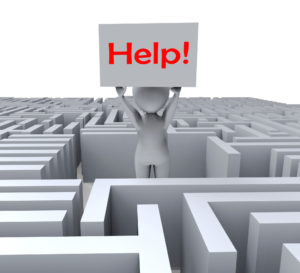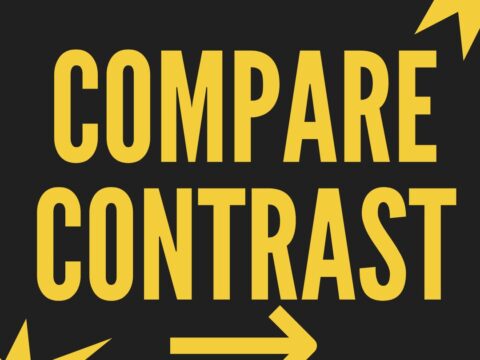 It’s no secret many parents are frustrated with public schools. Are kids learning to think or just to pass tests? Are they spending classroom time wisely or just doing what’s always been done? Are we developing lifelong learners or simply kids who can’t wait to graduate?
It’s no secret many parents are frustrated with public schools. Are kids learning to think or just to pass tests? Are they spending classroom time wisely or just doing what’s always been done? Are we developing lifelong learners or simply kids who can’t wait to graduate?
If this describes you, you’re not alone in your concerns, but there’s hope. Consider a pedagogy that transcends rote memorization and the stock drills often found in today’s classrooms, expects critical thinking that teaches how to learn anything — not just school subjects. It’s called a “Growth Mindset”. In an Edsurge article by Rupa Gupta, former Redesign Administrator at Burnett Middle School in San Jose, Calif., she summarized the issue like this:
“In a recent national survey, 97 percent of teachers agreed that all students can and should have a growth mindset, and that same number said fostering a growth mindset is an important part of a teacher’s job. Yet only 50 percent said they have adequate solutions and strategies to shift mindset.”
So nearly everyone agrees this type of cerebral approach is important to real learning but few know how to make it happen.
What is Growth Mindset?
Let me back up a moment and define “Growth Mindset” more clearly. Most people believe basic human qualities like intelligence and talent are fixed traits: nature supersedes nurture. Kids are born with the characteristics that will mold their future. They are good at math or they aren’t. They can throw a football well or not. As kids grow, they figure out what they can and can’t do and adjust learning and life as needed to these truths. They come to believe that understanding and adapting to this process equates to success.
In a Growth Mindset, people believe ability can be developed through dedication and hard work. The cerebral and physical traits they were born with are just the starting point. Students are responsible for setting the patterns and strategies that allow them to succeed, by evaluating what they can do at any given point and making a plan for learning everything else.
Why should you care?
Why is this important? Because kids innately want to succeed. As soon as they enter school, they figure out the habits and patterns that will help them get through successfully. If they decide they aren’t creative, they won’t pursue music. If they fail at the Science Fair, they’ll fall in love with art instead. Our job as teachers is to notice when kids aren’t working up to their potential and help them devise strategies to overcome that. These shouldn’t be more of the same work they are failing it. It should be new approaches that evaluate what they are doing and come up with a different path to success.
That’s growth.
How to integrate Growth Mindset into your teaching
To integrate a Growth Mindset into your teaching, start by paying attention to what is and isn’t working for individual students as they work through lessons. It’s easy to say, “Cassie just doesn’t get Algebra” but notice why. Are there holes that need filling? Does she do things differently?
Here are five ideas to get you started:
- blend a Growth Mindset with your current teaching
- use a guiding webtool like Sown to Grow
- integrate coding into your teaching as a method of developing traits that encourage students to critically think and problem-solve
- post strategies for problem-solving, such as those included in Common Core’s Standards for Mathematical Practice, and make them part of all teaching
- a book for kids on building a growth mindset
Blended philosophy
Pick one of the thinking philosophies that have become prevalent in education and include it alongside your teaching strategies. These include Habits of Mind, Depth of Knowledge, and Mindfulness. For more details on these, click the links. Expect students to think critically as they work, look inward to solve problems before turning to others, and accept that they are smart enough to learn most of what they are expected to learn.
If it’s difficult for you to blend a Growth Mindset into your teaching, there’s a new webtool I recently found that makes it easy. It’s called Sown to Grow. This clever free online tool provides a template for encouraging students to learn rather than simply track grades. Students become your partners in their education as they bring their particular passion and energy to classwork, set personal goals, keep track of their progress, and reflect on how they achieved their goals.
Coding
Learning to code is one of the most exciting advancements in education in years. Coding inherently expects students to think about what they’re doing, troubleshoot problems, and focus on goals — all essential elements of the Growth Mindset. Many free online coding programs work for a diverse community of learners, are scalable, can be easily differentiated, and can span days or months. If you’re into gamifying learning, coding may be perfect for you.
The Common Core Standards for Mathematical Practice
If you’re a Common Core school, the Standards for Mathematical Practice are well-aligned with the needs of a Growth Mindset. Some of the critical thinking traits included are:
- perseverance
- finding patterns
- critique the thinking of others
- use tools appropriate to the project
These are well-accepted by parents and educators as fundamental strategies for critical thinking that work not just for math but many problems students face in their lives.
Rich Linville’s Growth Mindset for Kids
I don’t often find books addressing growth mindset addressed to the children we are talking about. Rich Linville, author of a wide variety of children’s books on topics like bullying, praying, and thinking, talks about the importance of children adopting a growth mindset in his wonderful book, Growth Mindset for Kids. Here’s the Amazon blurb:
Why do kids need to know about Growth Mindsets? Scientists have found that there are two different kinds of mindsets: FIXED MINDSETS and GROWTH MINDSETS. A fixed mindset never changes. In a Fixed Mindset your failures define you like, “I’m no good at dancing!” If I never learn new things or never make new friends, I have a fixed mindset. My growth mindsets can change! When I learn something new or challenging then I have a growth mindset like, “I can’t dance yet. If I focus and practice, I can learn to dance.”
***
The increasing popularity of Growth Mindset tools such as these four reflects the importance teachers place on engaging thoughtful processes as they work toward curricula goals. Start these early and they become habits that students use throughout their education journey. If you have students (or children) who struggle with learning or think they’re not smart enough, the Growth Mindset may be exactly the right pedagogy to change them from bored to passionate.
–published first on TeachHUB
Jacqui Murray has been teaching K-8 technology for 20 years. She is the editor/author of over a hundred tech ed resources including a K-8 technology curriculum, K-8 keyboard curriculum, K-8 Digital Citizenship curriculum. She is an adjunct professor in tech ed, CSG Master Teacher, webmaster for four blogs, an Amazon Vine Voice reviewer, CAEP reviewer, CSTA presentation reviewer, freelance journalist on tech ed topics, and a weekly contributor to TeachHUB. You can find her resources at Structured Learning. Read Jacqui’s tech thriller series, To Hunt a Sub and Twenty-four Days.




































3 thoughts on “What is a Growth Mindset?”
Comments are closed.